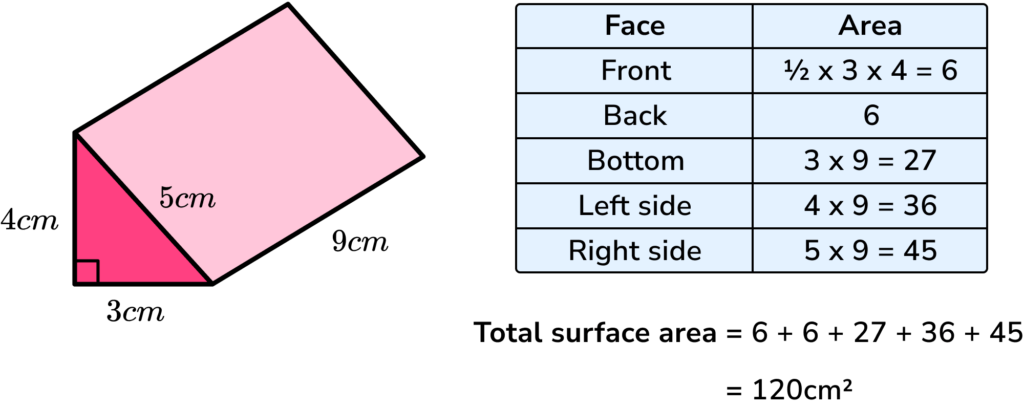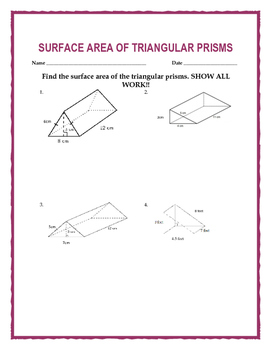

A triangular prism has \(5\) faces, \(9\) edges, and \(6\) vertices.The following are some features of a triangular prism: The properties of a triangular prism help us to easily identify it.

See the image below of a triangular prism where \(l\) represents the length of the prism, \(h\) represents the height of the base triangle, and \(b\) represents the bottom edge of the base triangle. Thus, a triangular prism has \(5\) faces, \(9\) edges, and \(6\) vertices. The \(2\) triangular faces are congruent to each other, and the \(3\) lateral faces which are in the shape of rectangles are also congruent to each other.
Area of triangular prism how to#
How to Find the Volume and Surface Area of Rectangular Prisms?Ī step-by-step guide to finding the volume and surface area of triangular prismĪ triangular prism is a three-dimensional polyhedron with three rectangular faces and two triangular faces.

The name of a particular prism depends on the two bases of the prism, which can be triangular, rectangular, or polygonal. The prism is a solid shape with flat faces, two identical bases, and the same cross-section along its entire length.

It is a three-dimensional figure with six faces, eight vertices, and twelve edges. What is triangular prism explain with an example?Ī triangular prism is a three-sided polygon with two parallel faces. With those two formulas in hand, you'll be able to easily calculate the surface area of any triangular prism!įAQ What is a triangular prism in geometry? To find the surface area of a triangle, multiply the base times the height and then divide that number by 2. To find the surface area of a rectangle, simply multiply the length times the width. The surface area of a triangular prism is found by adding together the areas of all six faces-three rectangles and three triangles. So if our rectangular face has an area of 24 square inches and our triangle face has an area of 12 square inches, then the total surface area would be 36 square inches. Now that we know how to find the areas of each type of face, we can find the total surface area by adding them all together. So if our triangle has a base of 6 inches and a height of 4 inches, then we would multiply 6 times 4 to get 24, and then divide that by 2 to get 12 square inches. We can do this by multiplying the base times the height, and then dividing that number by 2. Now let's find the area of one of the triangle faces. So if our rectangular face has a length of 6 inches and a width of 4 inches, then the area would be 6 multiplied by 4, or 24 square inches. We can do this by multiplying the length times the width. This sounds like a lot, but it's actually not too bad once you get started.įirst, let's find the area of one of the rectangular faces. To find the surface area of a triangular prism, we need to find the areas of all of the faces and add them together. How to Find the Surface Area of a Triangular Prism A triangular prism is a three-sided polygon with two parallel faces.


 0 kommentar(er)
0 kommentar(er)
